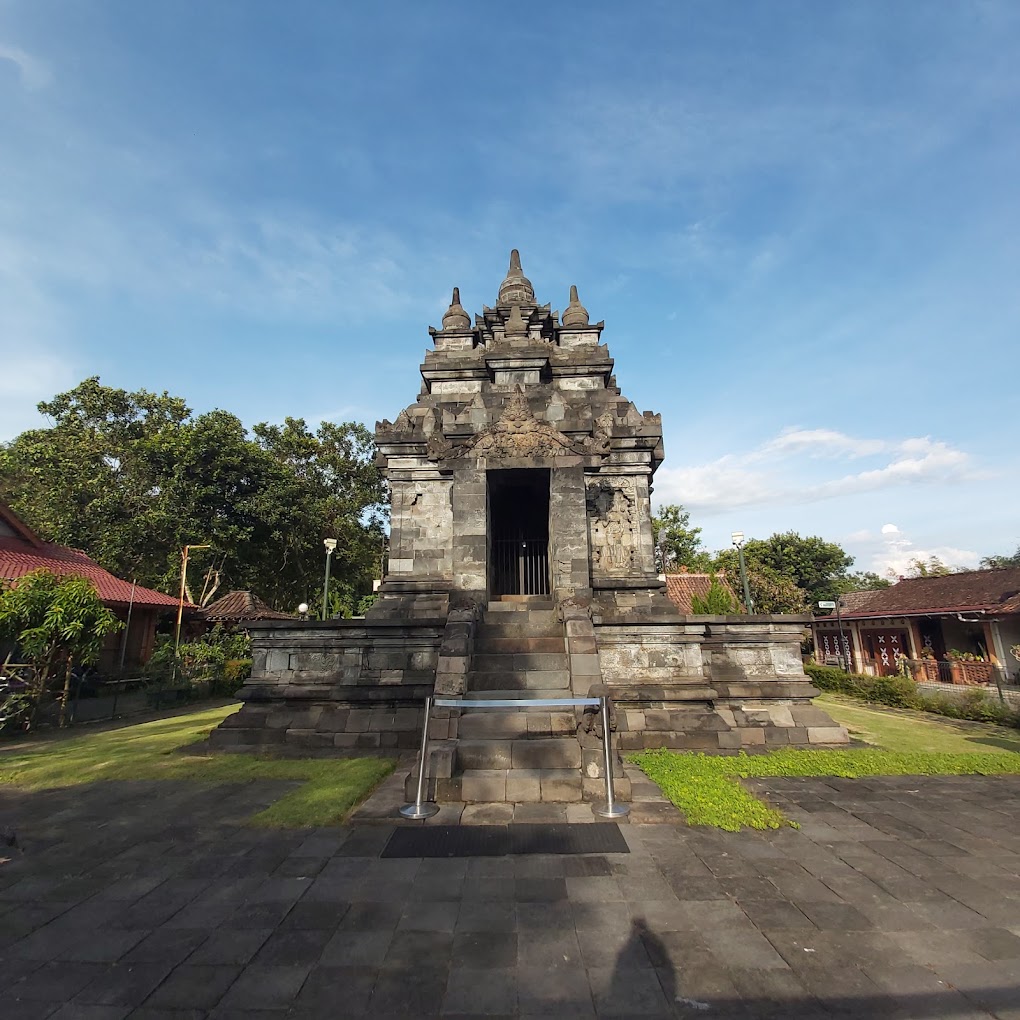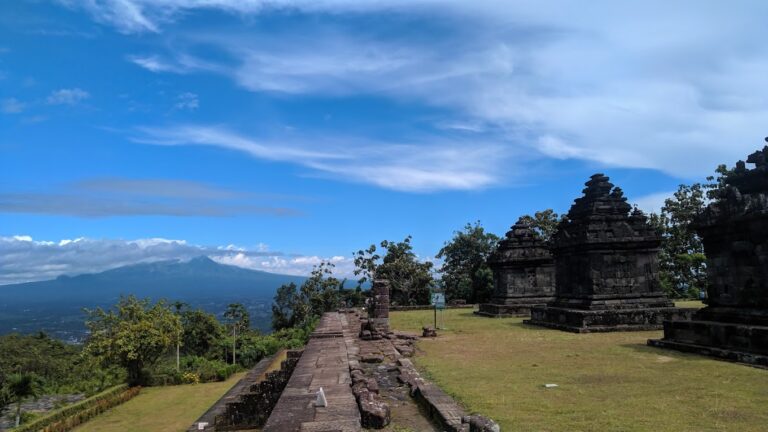Pawon Temple, a historical heritage located in Borobudur Village, Magelang Regency, Central Java, is a silent witness to the rich blend of Hindu and Buddhist influences in Indonesia. Even though it is smaller in size compared to its neighbors, Mendut Temple and Borobudur Temple, Pawon Temple has invaluable historical and archaeological value. Want to know more about Pawon Temple? Come on, take a look at the following review!
Origins and History
Pawon Temple, which dates from the 9th century AD, is thought to have been built during the reign of the Sailendra Dynasty which also built Borobudur Temple. The name “Pawon” itself comes from the Javanese word meaning “kitchen”, which suggests that this temple may have been used for religious or cult activities involving food cooking ceremonies.
Pawon Temple is a Hindu temple located in Wanurejo Village, Borobudur District, Magelang Regency, Central Java. This temple is located between Mendut Temple and Borobudur Temple.
Development History
- Pawon Temple was founded by King Indra from the Ancient Mataram Kingdom.
- The construction of Pawon Temple is estimated to take around 10 years.
- Pawon Temple was built as a place of worship for Hindu gods.
Architecture and Relief
- Pawon Temple has simple architecture compared to Borobudur Temple.
- Pawon Temple does not have reliefs that tell Hindu stories.
- Pawon Temple is decorated with a kalamakara (giant head) decoration above the entrance.
Rediscovery and Restoration
- Pawon Temple was rediscovered in 1814 by Sir Thomas Stamford Raffles.
- In 1908, the Dutch East Indies government carried out the first restoration of Pawon Temple.
- The restoration of Pawon Temple was carried out again in the 1970s by the Indonesian government.
Function and Meaning
- Pawon Temple functions as a place of worship for Hindu gods.
- Pawon Temple is also used as a place for Hindu religious rituals.
- Pawon Temple has an important symbolic meaning for Hindus.
Historical and Cultural Value
- Pawon Temple has high historical value because it is one of the remains of the Ancient Mataram Kingdom.
- Pawon Temple also has high cultural value because it is an example of simple Hindu architecture.
- Pawon Temple is one of Indonesia’s cultural assets that must be preserved.
- Pawon Temple is an interesting place to visit for those of you who want to learn about Hindu history and culture.
Architecture and Relief
The architecture of Pawon Temple displays a distinctive mix of Hindu and Buddhist influences. This temple has a rectangular building shape with a curved roof typical of Javanese architecture. The reliefs that decorate the temple walls tell stories from both religions, such as the Ramayana stories which are an important part of Javanese culture.
Pawon Temple has simple architecture compared to Borobudur Temple. This temple is made of andesite stone and has a square plan with dimensions of 13.7 meters x 13.7 meters. Pawon Temple is 17.7 meters high, divided into three parts: feet, body and roof.
Leg Parts
The foot of Pawon Temple is 2 meters high and is decorated with a kalamakara (giant head) relief above the entrance. This kalamakara relief functions to ward off evil spirits and protect the temple from disturbance.
Body Parts
The body of Pawon Temple is decorated with reliefs that tell Hindu stories. These reliefs are carved with very fine and beautiful detail.
Some of the reliefs found at Pawon Temple include
- Relief of Garuda carrying Amrita (water of life)
- Bima and Dwarawati reliefs
- Relief of Arjunawiwaha
Roof Part
The roof of Pawon Temple is pyramid-shaped and decorated with small stupas. These stupas symbolize the purity and majesty of Hinduism.
Pawon Temple Relief
Pawon Temple has many reliefs that tell Hindu stories. These reliefs are carved with very fine and beautiful detail. The following are some of the reliefs found at Pawon Temple:
Relief of Garuda carrying Amrita (water of life): This relief tells the story of Garuda who succeeded in snatching Amrita from the gods. Relief of Bima and Dwarawati: This relief tells the story of Bima who married Dewi Dwarawati. Arjunawiwaha Relief: This relief tells the story of Arjuna who chose Dewi Supraba as his queen. Pawon Temple has simple but beautiful architecture. The reliefs at Pawon Temple tell Hindu stories that are full of meaning. Pawon Temple is an important historical heritage and must be preserved.
Restoration and Preservation
Like many other historical relics, Pawon Temple is also undergoing a restoration process to maintain its authenticity and beauty. Restoration efforts are being carried out in stages by the Indonesian government to ensure that this temple can still be enjoyed by future generations.
Historical and Spiritual Tourism
Pawon Temple, although smaller, is still one of the popular tourist destinations in the Borobudur area. Visitors can enjoy the beauty of the architecture and reliefs while learning more about Java’s rich history and culture. Pawon Temple, with its ancient yet enchanting charm, provides a clear picture of Indonesia’s rich history and culture. As a silent witness to the past, this temple continues to inspire and invite visitors to explore the traces of past civilizations.
If you want to visit Pawon Temple, here is some information you need to know:
Location: Wanurejo Village, Borobudur District, Magelang Regency, Central Java.
Opening hours: 08.00 – 17.00 WIB.
Ticket price: Rp. 5,000,- per person.
Pawon Temple, with its blend of Hindu and Buddhist influences radiating in its architecture, is a symbol that reminds us of Indonesia’s rich and complex cultural heritage. Through its beauty, this temple continues to invite us to reflect on the long journey of human civilization and the importance of preserving historical heritage for future generations. Interested in visiting Pawon Temple as well as touring the surrounding tourist attractions? Come on, use Jomblang Cave Tour to get comfort while traveling!





